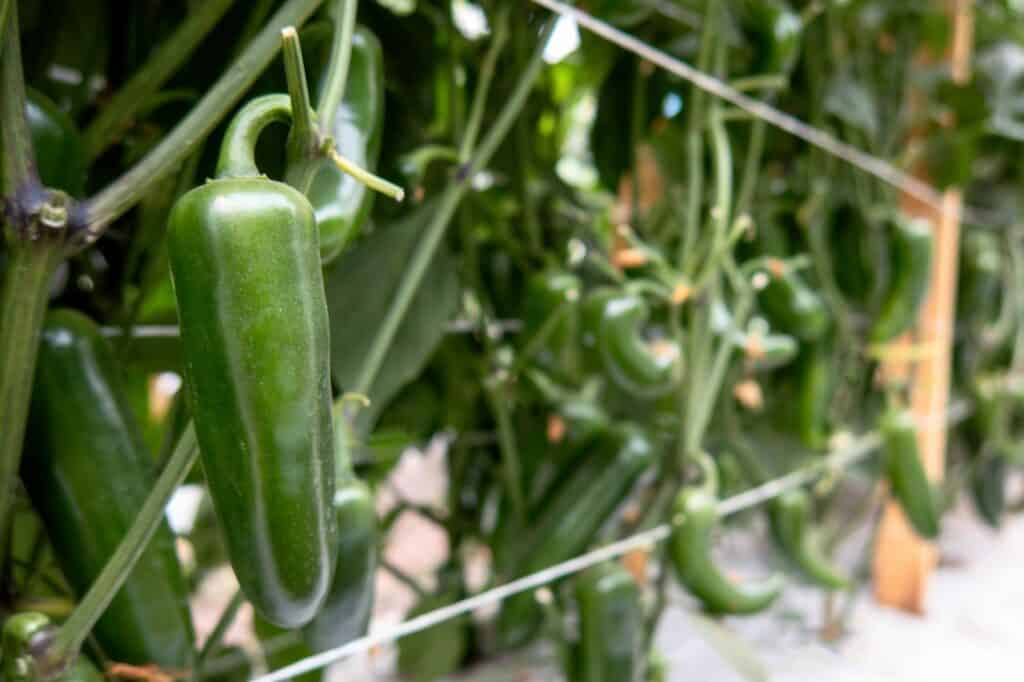Jalapeno peppers are a popular vegetable in many gardens due to their spicy flavor and versatility in cooking.
However, caring for these plants can be a bit tricky, especially when it comes to watering. Many gardeners wonder how often they should water their jalapeno plants to ensure they thrive and produce a bountiful harvest.
Understanding jalapeno plants and their unique needs is crucial when it comes to watering. Jalapeno plants require well-draining soil and a consistent supply of moisture to develop healthy roots and foliage.
Overwatering can lead to root rot, while underwatering can cause stress and stunted growth. Finding the right balance is key to keeping your jalapeno plants healthy and productive.
Key Takeaways:
- Jalapeno plants require consistent moisture to thrive, but overwatering can lead to root rot and other problems.
- Soil and potting requirements are important factors to consider when determining how often to water jalapeno plants.
- Light and temperature conditions, growth stages, and pest management also play a role in watering needs.
Don’t miss this related article:
Jalapeno Plant Leaves Drooping: 5 Causes, Solutions & Best Care Tips

Understanding Jalapeno Plants
Jalapeno plants are a type of pepper plant that is commonly grown in home gardens and commercial farms.
They are a popular choice for gardeners because they are relatively easy to grow and produce a bountiful harvest.
Jalapeno plants are part of the Capsicum annuum species, which also includes bell peppers and other hot pepper varieties.
Jalapeno peppers are known for their distinctive heat level, which is measured on the Scoville heat units (SHU) scale.
The heat level of jalapeno peppers can vary depending on factors such as the growing conditions and the time of harvest.
Generally, jalapeno peppers have a heat level of between 2,500 and 8,000 SHU, which makes them milder than some other hot peppers.
Pepper plants, including jalapeno plants, require consistent watering to thrive. Overwatering can lead to root rot and other problems, while underwatering can cause the plants to wilt and die.
The amount of water that jalapeno plants need can vary depending on factors such as the weather, the soil type, and the stage of growth.
It is generally recommended to give jalapeno plants 1-2 inches (2.5-5 cm) of water each week. However, it is important to let the soil start to dry out slightly between watering sessions to avoid overwatering.
Using a soil moisture sensor can help gardeners accurately judge their plants’ watering needs.
Jalapeno plants are a popular choice for home gardeners and commercial farmers due to their ease of growth and bountiful harvest.
Understanding the heat level of jalapeno peppers, as well as the watering needs of pepper plants, can help gardeners cultivate healthy and productive plants.
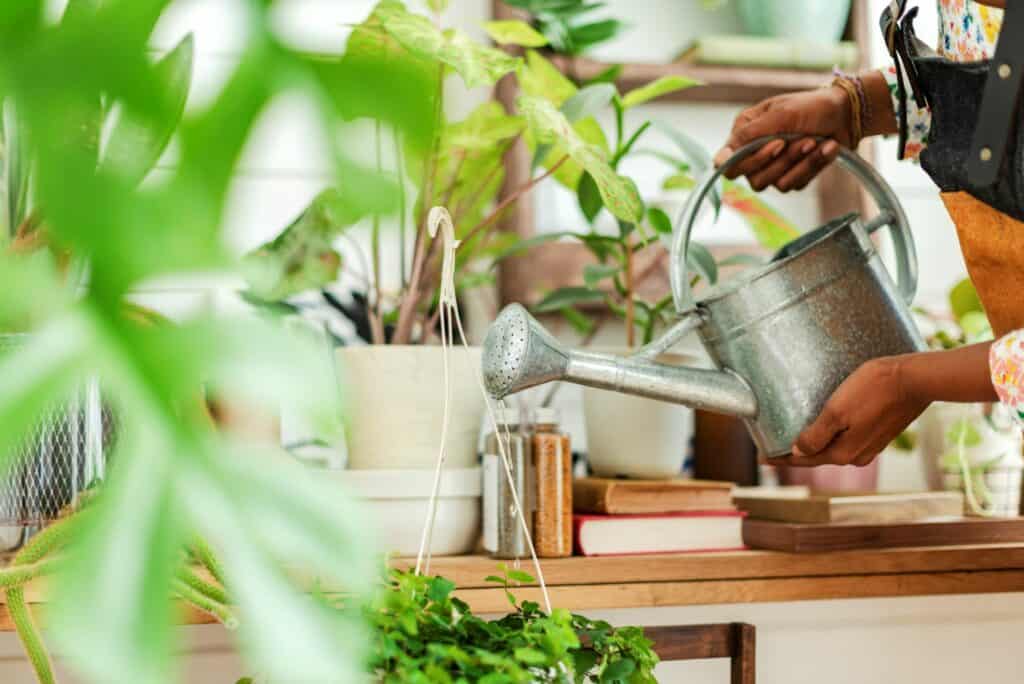
Watering Needs of Jalapeno Plants
Jalapeno plants require consistent watering to produce healthy fruit. Overwatering or underwatering can lead to stunted growth or disease.
It is important to water jalapeno plants correctly to ensure they receive the appropriate amount of moisture.
How Often to Water Jalapeno Plants
Most jalapeno plants require one to two inches of water per week. However, this can vary depending on weather conditions, soil type, and pot size.
During hot and dry weather, jalapeno plants may require more frequent watering to prevent the soil from drying out.
It is best to water jalapeno plants deeply and infrequently rather than shallowly and frequently. This encourages the roots to grow deeper and establish a stronger root system. Watering jalapeno plants too often can lead to waterlogged soil, which can cause root rot.
Signs of Overwatering and Underwatering
Overwatering jalapeno plants can lead to yellowing leaves, wilting, and root rot. Signs of underwatering include dry soil, wilted leaves, and slow growth.
To determine if jalapeno plants require watering, use a moisture meter or stick your finger into the soil. If the top inch of soil feels dry, it is time to water.
How to Water Jalapeno Plants
When watering jalapeno plants, it is best to water at the base of the plant rather than overhead. Overhead watering can lead to fungal diseases and can wash away beneficial insects. Use a hose or watering can to water the plants slowly and deeply.
It is important to water jalapeno plants in the morning to allow the leaves to dry before nightfall. Wet leaves at night can lead to fungal diseases. Avoid watering during the hottest part of the day, as the water can evaporate before the plant can absorb it.
Jalapeno plants require consistent watering to produce healthy fruit. Watering deeply and infrequently, checking soil moisture regularly, and avoiding overhead watering can help prevent overwatering and underwatering.
By following these watering guidelines, gardeners can ensure their jalapeno plants are well-watered and healthy.
Soil and Potting Requirements
Jalapeno plants require well-drained soil that is rich in organic matter. The ideal soil type for jalapeno plants is loamy soil that is well-aerated, retains moisture, and drains well. A good soil mix for jalapeno plants should contain a blend of peat moss, perlite, and vermiculite.
When growing jalapeno plants in pots, it is essential to choose the right potting mix. A good potting mix should be well-draining, retain moisture, and provide adequate nutrients to the plants.
A potting mix that contains peat moss, perlite, and vermiculite is ideal for growing jalapeno plants in pots.
Mulching around the base of the jalapeno plants can help retain moisture in the soil and keep the roots cool during hot weather. Mulch also helps suppress weed growth and adds organic matter to the soil.
It is crucial to ensure that the soil and potting mix are free of pests and diseases that can harm the jalapeno plants. Using sterile soil and potting mix can help prevent the spread of pests and diseases.
Providing good soil and potting requirements is essential for growing healthy and productive jalapeno plants.
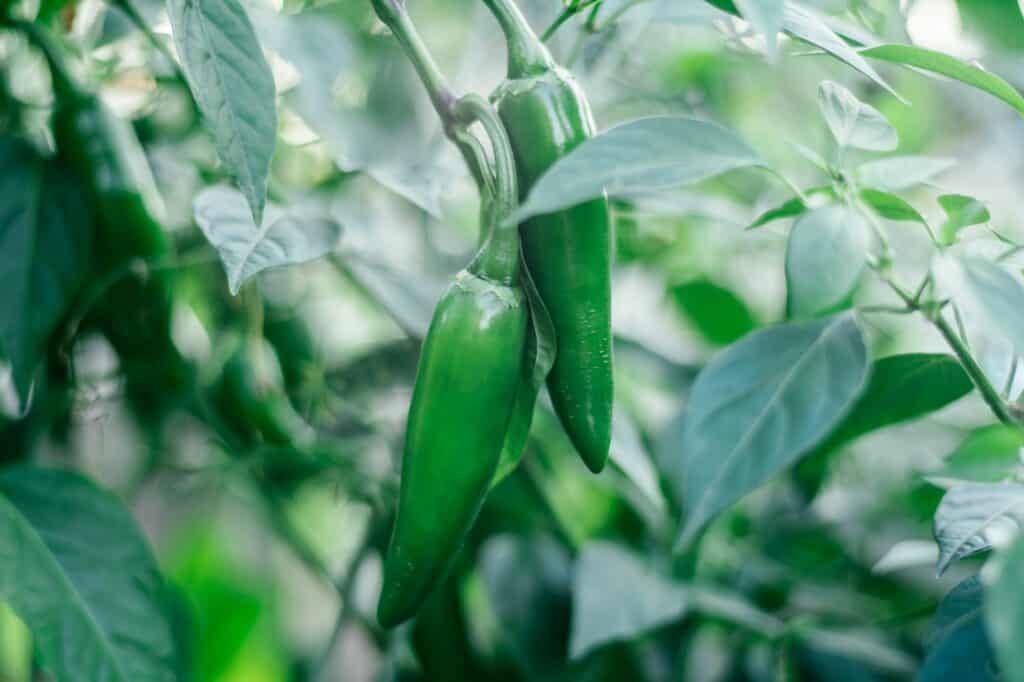
Light and Temperature Conditions
Jalapeno plants require a lot of sunlight to grow and produce peppers. It is recommended to provide seedlings with at least 12 hours of direct sunlight per day, while mature plants require at least 8-10 hours of sunlight per day. They thrive in warm temperatures between 65 and 80°F (18-27°C) and grow best in full sun.
It is important to note that jalapeno plants can tolerate partial shade conditions, but they will not produce as many peppers as those grown in full sun. Therefore, it is best to plant jalapenos in an area that receives full sun for most of the day.
In addition to sunlight, it is important to consider the temperature when growing jalapeno plants. They grow best in warm temperatures, but high temperatures can cause the plants to dry out quickly and require more frequent watering.
During hot, dry spells, it may be necessary to water jalapeno plants more often to prevent them from wilting.
Providing jalapeno plants with ample sunlight and warm temperatures is crucial for their growth and pepper production.
Jalapeno Plant Growth Stages
Jalapeno plants go through several growth stages before they are ready to be harvested. Knowing these stages is important for proper care and watering of the plant.
1. Seedling Stage
The seedling stage is the first stage of growth for a jalapeno plant. During this stage, the plant is just starting to grow and establish its roots. It is important to keep the soil moist during this stage, but not too wet. Overwatering can lead to root rot and other problems.
2. Adolescent Stage
The adolescent stage is when the plant starts to grow larger and develop more leaves. During this stage, the plant is still growing its roots and establishing itself. It is important to continue to keep the soil moist, but not too wet.
3. Growth Stage
The growth stage is when the plant really starts to take off. It will grow larger and develop more leaves and branches.
During this stage, the plant will need more water than in the previous stages. It is important to water the plant deeply and allow the soil to dry out slightly between waterings.
4. Maturation Stage
The maturation stage is when the plant stops growing and starts to produce fruit. During this stage, the plant will need less water than in the previous stages.
It is important to allow the soil to dry out slightly between waterings, but not to let it dry out completely.
5. Flowering Stage
The flowering stage is when the plant starts to produce flowers. This is an important stage because it is when the plant will start to produce fruit.
During this stage, it is important to continue to water the plant deeply and allow the soil to dry out slightly between waterings.
6. Fruiting Stage
The fruiting stage is when the plant starts to produce fruit. During this stage, it is important to continue to water the plant deeply and allow the soil to dry out slightly between waterings.
It is also important to fertilize the plant regularly to ensure that it has enough nutrients to produce healthy fruit.
The growth stages of a jalapeno plant are seedling, adolescent, growth, maturation, flowering, and fruiting. Proper watering during each stage is important for the health and productivity of the plant.
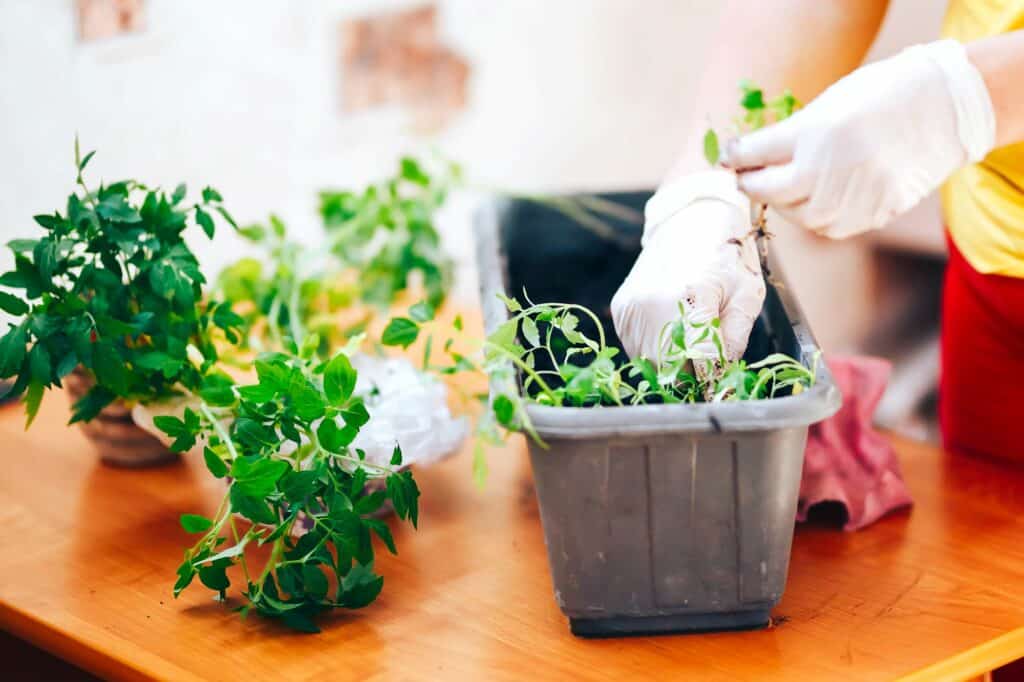
Jalapeno Plant Care
Jalapeno plants are easy to grow and care for, making them a great addition to any garden. Proper care is essential to ensure healthy plant growth and a bountiful harvest. Here are some tips for taking care of your jalapeno plants:
Watering
Watering is an essential part of jalapeno plant care. It is important to water the plant regularly, but not too much. Overwatering can lead to root rot and other problems.
The soil should be moist but not waterlogged. A good rule of thumb is to water the plant when the top inch of soil is dry. In hot, dry weather, the plant may need to be watered more often.
Routine Maintenance
Regular maintenance is important for the health of your jalapeno plant. This includes pruning, fertilizing, and pest control. Pruning helps to promote healthy growth and prevents the plant from becoming too bushy.
Fertilizing provides essential nutrients to the plant and promotes healthy growth. Pest control helps to prevent damage from insects and other pests.
Pruning
Pruning is an important part of jalapeno plant care. It helps to promote healthy growth and prevents the plant from becoming too bushy.
Prune the plant regularly by pinching off the tips of the branches. This will encourage the plant to produce more fruit and will prevent it from becoming too tall and leggy.
Fertilizing
Fertilizing is essential for the health of your jalapeno plant. Use a balanced fertilizer that is high in nitrogen, phosphorus, and potassium.
Fertilize the plant every two weeks during the growing season. Be careful not to over-fertilize, as this can lead to burned roots and other problems.
Pest Control
Pest control is important for preventing damage from insects and other pests. Use an insecticidal soap or neem oil to control pests such as aphids, spider mites, and whiteflies. Be sure to follow the instructions on the product label carefully.
Taking care of your jalapeno plants is easy and rewarding. With a little bit of care and attention, you can enjoy a bountiful harvest of delicious peppers.
Common Jalapeno Plant Diseases and Pests
Jalapeno plants are susceptible to various diseases and pests that can affect their growth and yield. Here are some of the most common jalapeno plant diseases and pests:
Wilt
Jalapeno plants can suffer from wilt, which is a condition that causes the leaves to droop and wilt. Wilt can be caused by various factors, including fungal diseases, bacterial infections, and environmental stress. To prevent wilt, it is essential to maintain proper watering and drainage, avoid over-fertilizing, and promptly remove infected plants.
Root Rot
Root rot is a fungal disease that affects the roots of jalapeno plants, causing them to decay and die. Symptoms of root rot include wilting, yellowing leaves, and stunted growth. To prevent root rot, it is crucial to avoid overwatering, provide proper drainage, and use well-draining soil.
Aphids
Aphids are small insects that can infest jalapeno plants and suck the sap from the leaves, causing them to wilt and die.
Aphids can also transmit viral diseases to jalapeno plants. To control aphids, it is essential to use insecticidal soap or neem oil, provide proper ventilation, and remove infected plants.
Fungal Diseases
Jalapeno plants are susceptible to various fungal diseases, including powdery mildew, anthracnose, and verticillium wilt. Fungal diseases can cause yellowing leaves, wilting, and stunted growth.
To prevent fungal diseases, it is essential to maintain proper watering and drainage, avoid overcrowding, and use disease-resistant varieties.
Leaves
The leaves of jalapeno plants can be affected by various diseases, including bacterial leaf spot, leaf blight, and leaf curl. Symptoms of leaf diseases include yellowing, wilting, and spots on the leaves.
To prevent leaf diseases, it is essential to avoid overwatering, provide proper ventilation, and remove infected leaves.
Jalapeno plants are susceptible to various diseases and pests that can affect their growth and yield. It is essential to maintain proper watering and drainage, use disease-resistant varieties, and promptly remove infected plants to prevent the spread of diseases and pests.

Harvesting and Use of Jalapeno Peppers
Jalapeno peppers are a popular ingredient in many dishes, sauces, and salsas. They are easy to grow and produce fruit abundantly. Knowing when and how to harvest jalapeno peppers is crucial to ensure that they are at their peak flavor and quality.
Jalapeno peppers are ready to harvest when they have reached their full size and have turned a deep green color.
However, some gardeners prefer to pick jalapenos early when they are still green and crisp, great for pickling. Another clear sign that a pepper is maturing is the pepper’s size. A mature jalapeno pepper will be around 2-3 inches long and 1 inch wide.
To harvest jalapeno peppers, gently twist the fruit off the stem or use a sharp pair of scissors to cut the stem just above the fruit. Be careful not to damage the plant or any nearby flowers or fruit. Once harvested, jalapeno peppers can be used fresh or preserved for later use.
Jalapeno peppers can be used in a variety of dishes, sauces, and salsas. They add a spicy kick to everything from guacamole to chili.
To use jalapeno peppers, remove the stem and seeds and chop the pepper finely. Be sure to wash your hands thoroughly after handling jalapeno peppers to avoid any irritation.
Harvesting and using jalapeno peppers is easy and rewarding. By following the guidelines for harvesting and using jalapeno peppers, you can enjoy their spicy flavor in a variety of dishes and preserve them for later use.
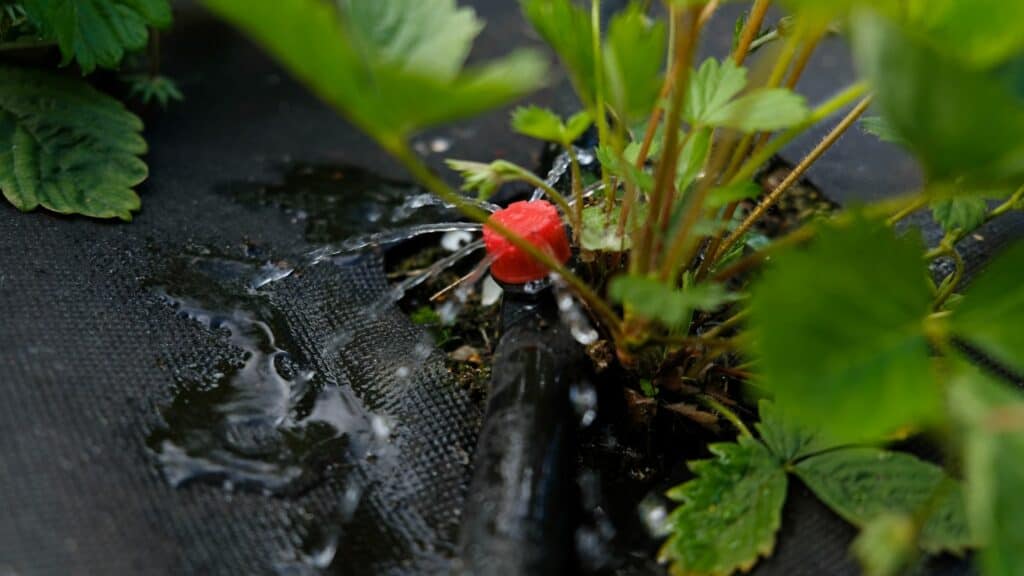
Irrigation Systems for Jalapeno Plants
Jalapeno plants require consistent watering to produce a bountiful harvest. Using an irrigation system can help ensure that your plants receive the right amount of water at the right time.
Drip Irrigation
Drip irrigation is an efficient way to water jalapeno plants. This system delivers water directly to the roots of the plant, reducing water waste and minimizing the risk of fungal diseases.
Drip irrigation systems can be set up to water plants on a regular schedule, ensuring that they receive water even if you are away from home.
Drip Irrigation System
A drip irrigation system consists of a series of tubes and emitters that deliver water to the base of the plant.
These systems can be set up to run on a timer, so you don’t have to worry about forgetting to water your plants.
Drip irrigation systems can be customized to fit the needs of your garden, and can be used to water plants in containers or raised beds as well as in-ground plants.
Rainwater
Collecting rainwater is another option for watering jalapeno plants. Rainwater is free of the chemicals found in tap water, and is often better for plants. Collect rainwater in a barrel or other container, and use it to water your plants as needed.
Using an irrigation system can help ensure that your jalapeno plants receive the right amount of water to thrive. Whether you choose drip irrigation, a drip irrigation system, or rainwater, be sure to monitor your plants and adjust your watering schedule as needed.
Special Conditions
Jalapeno plants are relatively easy to care for, but certain conditions can affect how often they need to be watered. Here are some special conditions to consider when watering your jalapeno plants:
Humidity
Humidity levels can affect how often you should water your jalapeno plants. In high humidity, the soil may retain more moisture, so you may need to water less frequently. In low humidity, the soil may dry out more quickly, so you may need to water more often.
Dry Soil
If the soil around your jalapeno plants is dry, it’s time to water them. Dry soil can cause stunted growth and reduce the yield of your plants. To prevent dry soil, water your plants regularly and make sure the soil is moist but not waterlogged.
Stunted Growth
If your jalapeno plants are not growing as quickly as they should, it may be due to underwatering or overwatering.
Underwatering can cause the soil to dry out and stunt the growth of your plants. Overwatering can cause root rot and also stunt the growth of your plants.
To prevent stunted growth, make sure you are watering your plants correctly and not over or under watering them.
Blossom-End Rot
Blossom-end rot is a condition that affects the fruit of jalapeno plants. It is caused by a calcium deficiency in the plant and can be exacerbated by irregular watering.
To prevent blossom-end rot, make sure you are watering your plants regularly and providing them with enough calcium. You can also add calcium to the soil by using a calcium-rich fertilizer.
Calcium Deficiency
A calcium deficiency can cause a variety of problems for your jalapeno plants, including blossom-end rot and stunted growth.
To prevent calcium deficiency, make sure you are providing your plants with enough calcium through fertilizer or other means. You can also add calcium to the soil by using crushed eggshells or bone meal.
It’s important to pay attention to the special conditions that can affect your jalapeno plants and adjust your watering schedule accordingly. By following these tips, you can ensure that your plants are healthy and productive.
Comparison with Other Plants
When it comes to watering jalapeno plants, it’s important to understand how they compare to other plants in terms of their water requirements.
Here are a few key differences to keep in mind:
- Tomatoes: Like jalapenos, tomato plants prefer consistent moisture but can suffer from overwatering. However, they generally require more water than jalapenos, with some sources recommending up to 2 inches of water per week for tomatoes compared to 1-2 inches for jalapenos. It’s important to monitor the soil moisture level and adjust watering accordingly for both plants.
- Cacti and Succulents: In contrast to jalapenos and tomatoes, cacti and succulents are adapted to arid environments and require infrequent watering. Overwatering can be particularly harmful to these plants, as it can lead to root rot. It’s important to allow the soil to dry out completely between waterings and to use a well-draining soil mix.
- Leafy Greens: Plants like lettuce, spinach, and kale have high water requirements and may need to be watered daily in hot weather. However, they are also more tolerant of overwatering than some other plants, as excess water can drain away more easily in their loose soil.
Frequently Asked Questions
How often should I water my pepper plants?
The frequency of watering jalapeno plants depends on various factors such as temperature, humidity, soil type, and the size of the container. As a general rule, jalapeno plants need about one to two inches of water each week instead of daily. It is recommended to dry out the soil in between watering to avoid overwatering.
What is the best watering schedule for growing jalapenos?
It’s best to water your jalapeno plants two or three times a week in the mornings, before the sun evaporates the moisture. This will help ensure that the plants have enough water to thrive during the day. However, the best watering schedule may vary depending on the specific conditions of your growing environment.
Can you overwater jalapeno plants?
Yes, overwatering jalapeno plants can lead to root rot, which can be fatal to the plant. It is important to allow the soil to dry out between watering to prevent overwatering. Signs of overwatering include yellowing leaves, wilting, and a foul odor coming from the soil.
How many times a week should I water my jalapeno plants?
As mentioned before, jalapeno plants need about one to two inches of water each week. This can be achieved by watering the plants two or three times a week. However, the best watering schedule may vary depending on the specific conditions of your growing environment.
Do jalapeno plants need consistent watering?
Jalapeno plants do not need consistent watering. In fact, it is recommended to dry out the soil in between watering to prevent overwatering. This will also help the plants develop a stronger root system and become more drought-tolerant.
How do I know when to water my jalapeno plants?
One way to know when to water jalapeno plants is to stick your finger into the soil up to your first knuckle. If the soil feels dry, it’s time to water. Another way is to use a moisture meter to measure the moisture level of the soil. It’s important to remember that the best watering schedule may vary depending on the specific conditions of your growing environment.

Hey, I’m Lisa and I’ve been an avid gardener for over 30 years. I love writing, talking and living in the garden! Feel free to connect with me on my socials below

